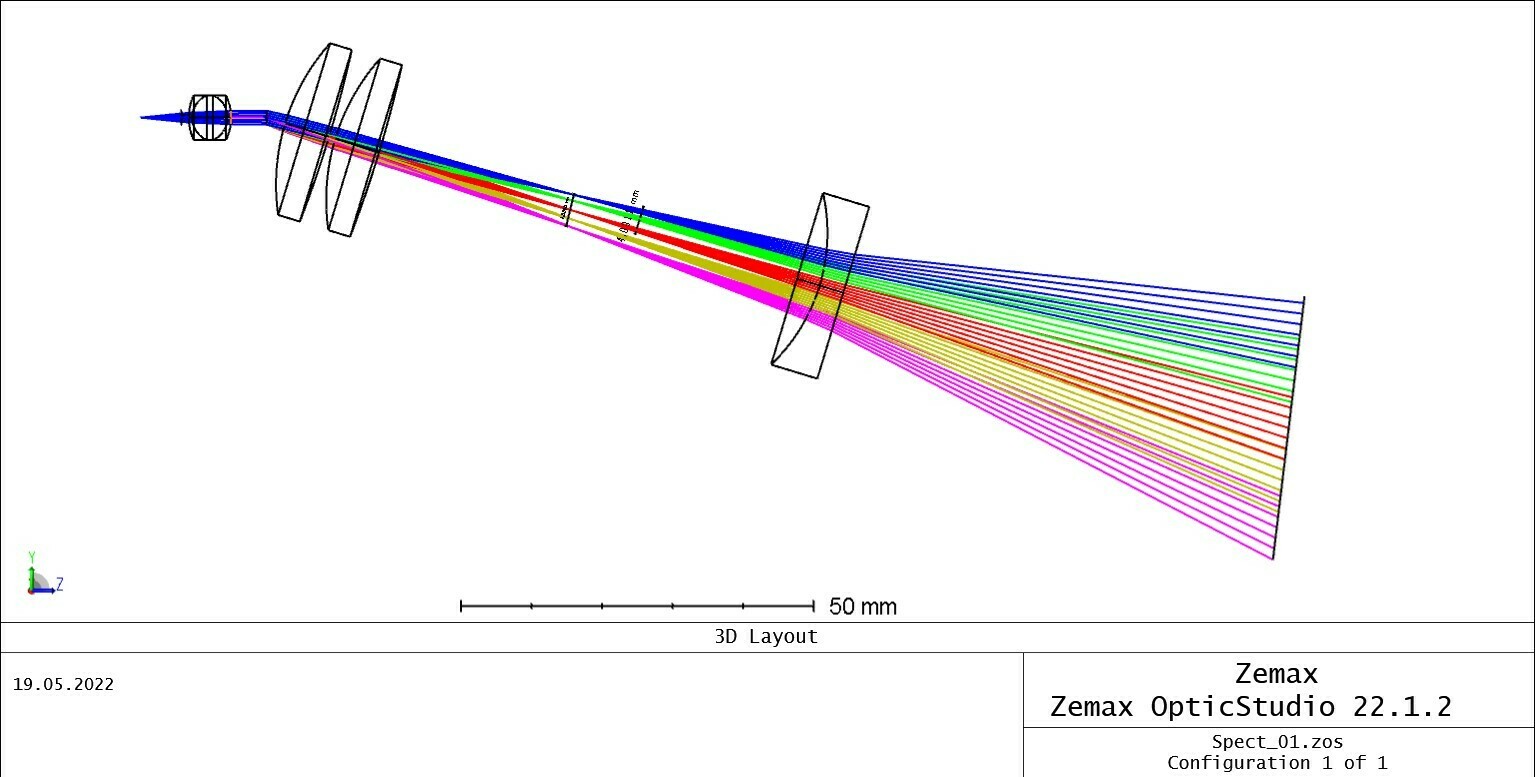Hello,
I am a new user of Zemax and as a Biomedical Engineer also anything but an expert with optics.
I have to design a simple spectrometer setup for a project. The basics are:
- light source: end of polymer optical fiber, 1mm diameter, NA=0.5
- diffraction grating: 500 l/mm
- Sensor: 1/3” CMOS from USB Webcam, no optics attached (meaning 4,8mm sensor width)
- Lenses preferably from Thorlabs
Now, I have been trying to work along with the “How to build a spectrometer”-Tutorial from the Zemax Website, but I am running into problems. I tried rebuilding the setup with my own specifications. More precisely, I:
- Set Object Space NA to around 0.1 (will use mechanical aperture in final setup - BTW can I simulate that as well?)
- Used f =10.2mm achromatic triplet (from Thorlabs) as a collimator, so that the spectrum fits onto my sensor (instead of achromatic doublet with greater focal length in example)
- Used 2x 50mm best form spherical lenses to focus the beam (similar to example)
- Used f=-50mm plano-concave lens to reduce field curvature (like in exapmple)
When I put everything into Zemax and use the example merit function from the tutorial downloads (obviously I made sure the surfaces are defined correctly and the distances make sense) and let the global optimization run, Zemax arranges my lenses in a way that my beam is totally going all over the place. Also, Zemax sets some surface thicknesses to values that are outside of the ones I specified in the merit function.

I can’t figure out, where the problem is and what I would have to change in order for it to work. I attached my Zemax file and the merit function file. Can anyone help me with this? I’ll be very thankful.
Cheers,
Tobias



